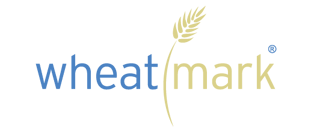The first thing you must know before you decide how to publish your book is the age of your target audience.
If your audience is below 18 or over 50, paperback or hardback is still a more viable option.
An article from the 2012 Pew Internet & American Life Project stated that “those who read e-books are more likely to be under age 50, have some college education, and live in households earning more than $50,000.”
Does that fit your target market? Although it is certainly cheaper and faster to go digital, if that’s not where your market is you won’t make many sales.
Children’s books, especially picture books or read-a-loud books, are best in a print format.
While more and more readers are turning to digital readers it may not necessarily be where your audience is. So even though print book sales dropped by more than 9 percent in 2011 and ebook sales grew 50 percent you need to be in the marketplace where your reader is today.
Age is always going to be a primary factor in determining your target audience but you will want to know other important factors as well. Is your audience typically male or female? Where do they shop? Online or offline? What kind of jobs are they employed in? Who do they hang out with? What do they do for recreation? Once these questions are answered you will find this publishing decision to be easy.
Most first-time authors think everyone will buy their book. This is not going to happen. Don’t ask who should read your book but who would read your book. Who would most likely enjoy your book? Where would you most likely find books similar to yours? What is that audience like?
Here are 3 things you can do to discover your target audience before you publish:
Read Blog comments: If you blog, read the comments and in many cases you will discover a lot. If you do not have a blog or do not have many followers yet, find several author blogs that match the type of book you are writing and read the comments they are getting. Take notes.
Check out forums and social media sites: What are the questions being asked? Who is asking them? Look for clues as to age, lifestyle and interest. Write down anything that helps build a customer profile.
Magazine Media Page: This is a great tip. What magazines do you think most closely follow your book subject matter? You can find lots of magazine choices at Magazine.com. Once there you can select a couple of categories. Write down the magazines titles and then go to that magazines website.
For instance, I went to the magazines.com website and selected Animals and Pets. The first magazine was National Geographic Kids. I put that into Google and went to the website. Once there I scrolled to the bottom of the page and picked “Advertise with us.” From there I clicked on “Fast Facts and Research.” This pulled up a complete media profile of National Geographic Kids. Three pages of information about the readers of this magazine. Priceless! If you think the audience of the magazine you pick is close to your book subject or that readers would be close to being the same, you can piggyback on their target audience research for free.
Although it takes times to correctly identify your target market doing so will increase your success in publishing a book.





